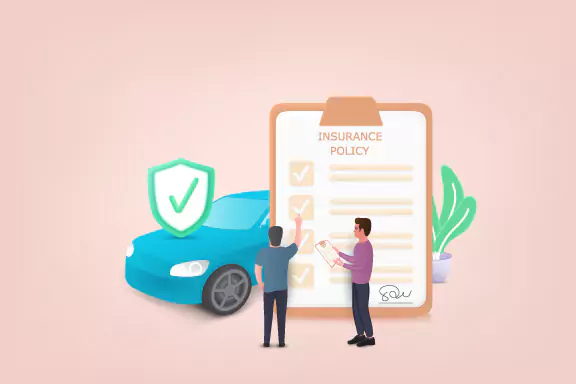The cost of car insurance can be a substantial expense to many people and finding ways to save on your premiums can be challenging. This is especially so if you’re new to the U.S. and unfamiliar with how insurance works here. However, there are in fact many ways you can reduce your premiums without sacrificing the coverage you need.
This guide will show you practical tips on how to save on car insurance costs, helping you keep more money in your pocket while still protecting yourself and your vehicle.
1. Shop Around and Compare Quotes
One of the most effective ways to save on car insurance is to shop around and compare quotes from different companies. Each insurance company calculates premiums differently, so the price for the same coverage can vary significantly between insurance providers.
To get the best deal, make sure you’re comparing “apples to apples”—look at the same coverage levels, deductibles, and policy terms for several insurance companies in each quote. Even if you’re happy with your current insurer, it’s a good idea to check prices with other companies every year or when your policy is up for renewal. You might find a better deal, and sometimes, your current insurer will match a lower rate if you ask.
2. Take Advantage of Discounts
Most car insurance companies offer a variety of discounts that can significantly lower your premium. Here are some common car insurance discounts that you should look for:
Good Driver Discounts: If you have a clean driving record with no accidents or tickets, you could qualify for a discount.
Multi-Policy Discounts: Bundling your car insurance with other policies, like home or renters insurance, can save you money.
Good Student Discounts: If you or someone on your policy is a student with good grades, you might qualify for a discount.
Safety Features Discounts: Having safety features like anti-lock brakes, airbags, or anti-theft devices can also lower your premium.
Beyond these common discounts, some companies offer unique savings opportunities, such as discounts for military service members or for paying your annual premium upfront. Make sure to ask your insurer about all possible discounts and take advantage of as many as you can.
3. Increase Your Deductible
Another straightforward way to lower your car insurance premium is to increase your deductible. The deductible is the amount you pay out of pocket before your insurance coverage kicks in if you make a claim. By choosing a higher deductible, you reduce the amount the insurance company has to pay in the event of a claim, which in turn lowers your premium.
For example, if you raise your deductible from $500 to $1,000, you may see a significant reduction in your monthly premium. Yet if this is the option you choose, make sure you have the financial resources to afford the higher deductible in case you need to make a claim. One way is to set aside the difference in your savings, so you’re prepared if something happens.
4. Drop Unnecessary Coverage
As your car ages, the value decreases, and some insurance coverage may no longer make financial sense. For example, if you have an older vehicle that’s fully paid off and not worth much, consider dropping your collision coverage and comprehensive coverage. These coverages pay for repairs or replacement if your car is damaged in an accident or other event, but they may not be worth the cost for a low-value car.
For example, if your car is worth $2,000 and your deductible is $500, the maximum payout you’d receive is $1,500. In this case, it might be smarter to cancel collision and comprehensive coverage and save that money for a new car in the future. However, be sure to maintain your state’s required minimum coverage for liability.
Similarly, review your policy for extras you might not need, such as rental car reimbursement or roadside assistance, especially if you already have these services through another insurance provider. Canceling unnecessary add-ons can lead to more savings on your car insurance premiums.
5. Consider Usage-Based or Pay-Per-Mile Insurance
If you don’t drive much, you could save on car insurance by opting for a usage-based or pay-per-mile insurance plan. These policies base your premium on how much you drive or how safely you drive and how much car insurance is. If you have a low annual mileage or rarely use your car, this type of plan could significantly lower your insurance costs.
With usage-based insurance, your driving habits are monitored through a mobile app or a device installed in your car. Safe driving behaviors, such as avoiding hard braking or speeding, can result in discounts. Pay-per-mile insurance charges you a base rate plus a fee for every mile you drive, making it ideal if you have a short commute or use public transportation frequently.
While these options can save you money, note that they involve tracking your driving, so make sure you’re comfortable with this level of monitoring before signing up.

6. Improve Your Credit Score
In most states, your credit score can impact your car insurance premiums. Insurers often use a credit-based insurance score to give liability coverage and predict your likelihood of filing a claim, and drivers with better credit scores typically pay less for insurance.
To improve your credit score and potentially lower your auto insurance rates, focus on paying bills on time, keeping credit card balances low, and avoiding opening too many new accounts. Regularly reviewing your credit report for errors and addressing any issues can also help boost your score. Over time, these actions can lead to savings on your car insurance costs.
7. Drive Safely and Maintain a Clean Record
A clean driving record is one of the most effective ways to lower your auto insurance rates. Insurance companies reward safe drivers with lower premiums because they pose less risk. By avoiding accidents and traffic violations, you can keep your car insurance premiums as low as possible.
Here’s how you can maintain a clean record and save:
Follow traffic laws: Obey speed limits, avoid distractions, and stay alert on the road.
Take a defensive driving course: Completing a state-approved course can not only improve your driving skills but may also qualify you for additional discounts.
Avoid unnecessary claims: Filing small claims can increase your premiums, so consider paying out-of-pocket for minor repairs.
By consistently practicing safe driving habits, you can enjoy lower car insurance costs and greater peace of mind on the road.
8. Regularly Review and Update Your Policy
Life changes, and so should your car insurance policy. If you review your policy regularly—especially before renewal—it will help ensure you’re still getting the best deal and that your coverage meets your current needs. If you’ve recently moved, gotten married, or changed jobs, your car insurance rate could be affected, so it’s important to keep your policy up to date.
Here are some tips for reviewing your policy:
Check for discounts: As your circumstances change, you may qualify for new discounts, such as a multi-policy discount or a good driver discount.
Adjust your coverage: If your car’s value has decreased, consider dropping collision or comprehensive coverage.
Compare rates: Even if you’re satisfied with your current insurer, it’s worth comparing quotes from other companies to see if you can find a better deal.
By regularly reviewing your policy and making adjustments as needed, you can ensure that you’re not overpaying for your car insurance while still getting the comprehensive insurance and coverage you need.

9. Bonus Helpful Tips
Beyond the common strategies to reduce your car insurance premiums, there are a few unique options that you may not have considered:
Extra Tip 1: Install Telematics Devices
Some insurance companies offer discounts if you agree to install a telematics device in your car. These devices track your driving habits, such as speed, braking, and mileage, and can help you qualify for safe driving discounts. If you’re a cautious driver, using telematics could significantly lower your car insurance costs.
Extra Tip 2: Explore Dividend Policies
Mutual insurance companies sometimes offer dividend policies, which can help reduce your overall costs. These policies might have slightly higher premiums, but because policyholders own a stake in the company’s investments, you could receive dividends at the end of the year. Companies like Amica Mutual, NJM Insurance, and American Family Insurance are well-known mutual insurers that offer these kinds of policies. If you’re comfortable with a dividend-based approach, it’s worth exploring these options to save money on car insurance in the long run.
Take Advantage of Smart Strategies to Lower Your Car Insurance Costs
Saving on car insurance doesn’t have to be difficult. By implementing the tips discussed in this guide—whether it’s comparing quotes, taking advantage of discounts, or adjusting your coverage—you can reduce your car insurance cost while still protecting yourself on the road. Remember, if your policy is up for renewal or your life circumstances have changed, it’s a great opportunity to review your coverage and explore new ways to save money on car insurance rates.
Start today by reviewing your policy, consulting with an independent insurance agent and seeing how much you can save.

